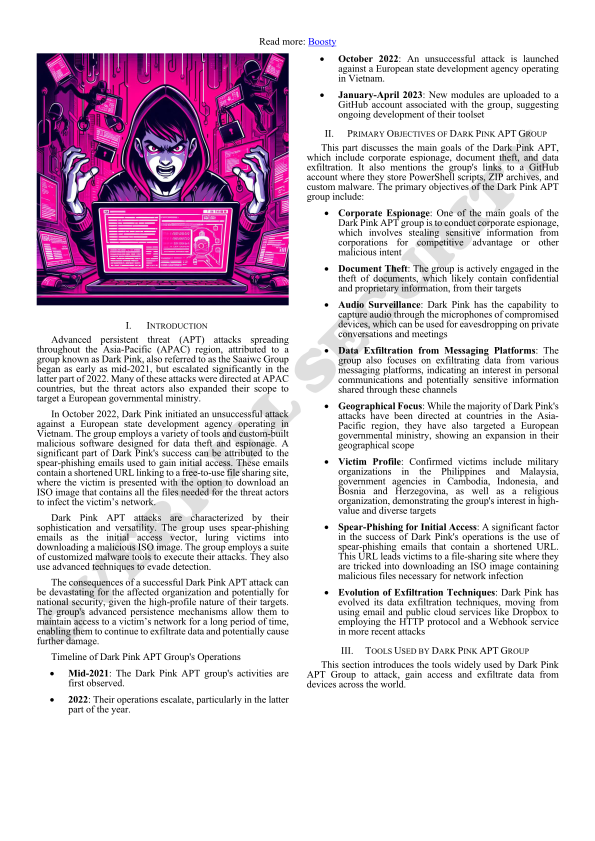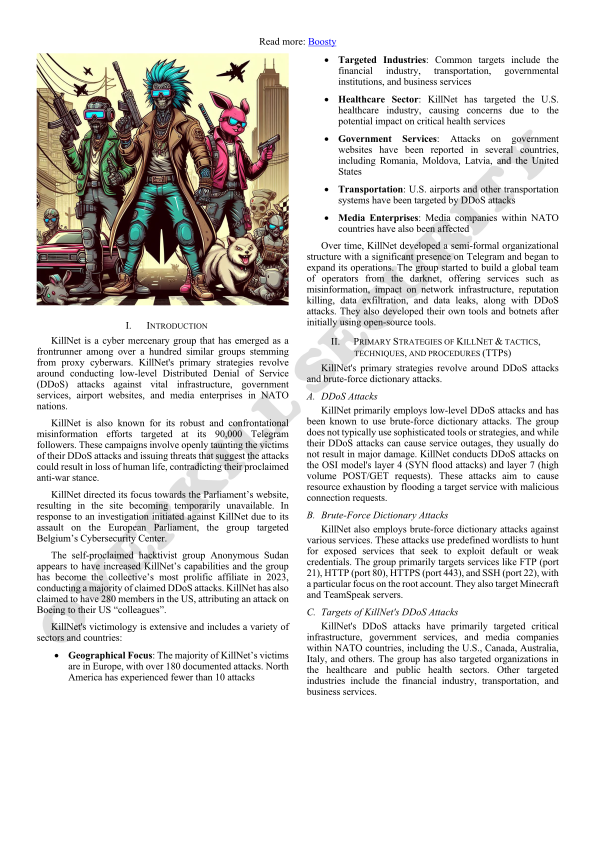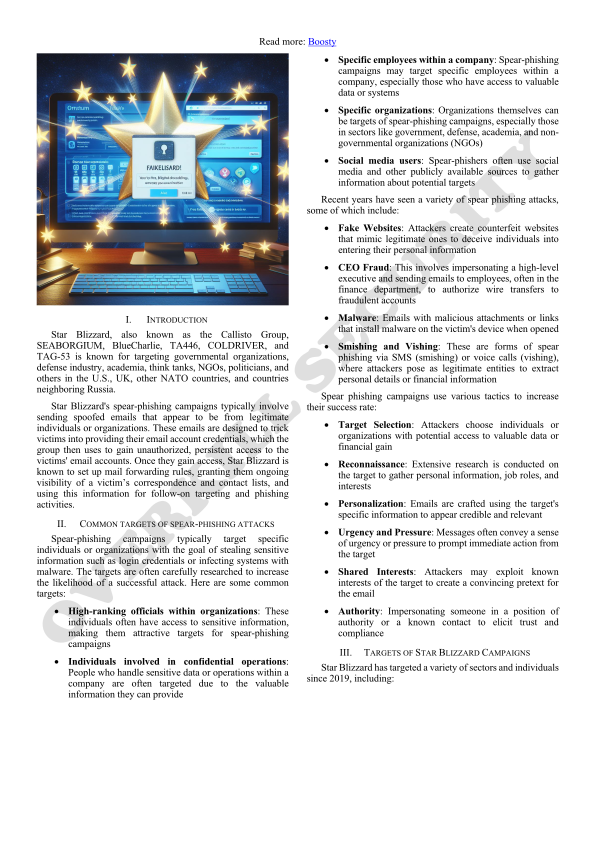Leveraging Energy Consumption Patterns for Cyberattack Detection in IoT Systems

«Promo»
Detection of Energy Consumption Cyber Attacks on Smart Devices

In a world where smart devices are supposed to make our lives easier, «Detection of Energy Consumption Cyber Attacks on Smart Devices» dives into the thrilling saga of how these gadgets can be turned against us. Imagine your smart fridge plotting is going to drain your energy bill while you sleep, or your thermostat conspiring with your toaster to launch a cyberattack. This paper heroically proposes a lightweight detection framework to save us from these nefarious appliances by analyzing their energy consumption patterns. Because, clearly, the best way to outsmart a smart device is to monitor how much juice it’s guzzling. So, next time your smart light bulb flickers, don’t worry—it’s just the algorithm doing its job.
---
The paper emphasizes the rapid integration of IoT technology into smart homes, highlighting the associated security challenges due to resource constraints and unreliable networks.
📌 Energy Efficiency: it emphasizes the significance of energy efficiency in IoT systems, particularly in smart home environments for comfort, convenience, and security.
📌 Vulnerability: it discusses the vulnerability of IoT devices to cyberattacks and physical attacks due to their resource constraints. It underscores the necessity of securing these devices to ensure their effective deployment in real-world scenarios.
📌 Proposed Detection Framework: The authors propose a detection framework based on analyzing the energy consumption of smart devices. This framework aims to classify the attack status of monitored devices by examining their energy consumption patterns.
📌 Two-Stage Approach: The methodology involves a two-stage approach. The first stage uses a short time window for rough attack detection, while the second stage involves more detailed analysis.
📌 Lightweight Algorithm: The paper introduces a lightweight algorithm designed to detect energy consumption attacks on smart home devices. This algorithm is tailored to the limited resources of IoT devices and considers three different protocols: TCP, UDP, and MQTT.
📌 Packet Reception Rate Analysis: The detection technique relies on analyzing the packet reception rate of smart devices to identify abnormal behavior indicative of energy consumption attacks.
Benefits
📌 Lightweight Detection Algorithm: The proposed algorithm is designed to be lightweight, making it suitable for resource constrained IoT devices. This ensures that the detection mechanism does not overly burden the devices it aims to protect.
📌 Protocol Versatility: The algorithm considers multiple communication protocols (TCP, UDP, MQTT), enhancing its applicability across various types of smart devices and network configurations.
📌 Two-Stage Detection Approach: The use of a two-stage detection approach (short and long-time windows) improves the accuracy of detecting energy consumption attacks while minimizing false positives. This method allows for both quick initial detection and detailed analysis.
📌 Real-Time Alerts: The framework promptly alerts administrators upon detecting an attack, enabling quick response and mitigation of potential threats.
📌 Effective Anomaly Detection: By measuring packet reception rates and analyzing energy consumption patterns, the algorithm effectively identifies deviations from normal behavior, which are indicative of cyberattacks.
Drawbacks
📌 Limited Attack Scenarios: The experimental setup has tested only specific types of attacks, which limit the generalizability of the results to other potential attack vectors not covered in the study.
📌 Scalability Concerns: While the algorithm is designed to be lightweight, its scalability in larger, more complex smart home environments with numerous devices and varied network conditions may require further validation.
📌 Dependency on Baseline Data: The effectiveness of the detection mechanism relies on accurate baseline measurements of packet reception rates and energy consumption. Any changes in the normal operating conditions of the devices could affect the baseline, potentially leading to false positives or negatives.
📌 Resource Constraints: Despite being lightweight, the algorithm still requires computational resources, which might be a challenge for extremely resource-limited devices. Continuous monitoring and analysis could also impact the battery life and performance of these devices.
Unpacking in more detail
AnonSudan

Oh, where do we even start with the digital drama that is Anonymous Sudan? Picture this: a group of «hacktivists» (because apparently, that’s a career choice now) decides to throw the digital equivalent of a temper tantrum across the globe. From the comfort of their mysterious lairs, they’ve been unleashing chaos since January 2023, targeting anyone from Sweden to Australia.
There’s a twist! Despite their name, there’s a juicy conspiracy theory that these digital vigilantes are actually Russian state-sponsored actors in disguise (guess the name of country who announces this theory and spent USD money to promote it?). Yes, you heard that right. They’ve been dropping hints in Russian, cheering for Russian government, and hanging out with their BFFs in the hacking group KillNet. Anonymous Sudan, however, is adamant they’re the real deal, proudly Sudanese and not just some Russian operatives on a digital espionage mission.
Either way, they’ve certainly made their mark on the world, one DDoS attack at a time.
-------
This document provides a analysis of the hacktivist group known as Anonymous Sudan. The analysis delves into various aspects of the group’s activities, including their origins, motivations, methods, and the implications of their actions. It offers a qualitative unpacking of the group’s operations, highlighting key findings and patterns in their behavior.
The insights gained from this analysis are useful for cyber security experts, IT professionals, and law enforcement agencies. Understanding the modus operandi of Anonymous Sudan equips these stakeholders with the knowledge to anticipate potential attacks, strengthen their defenses, and develop effective countermeasures against similar hacktivist threats
Unpacking in more detail

KillNet Group

KillNet, a cyber group, has risen to the top of the cyber activity leaderboard, eclipsing over a hundred other groups in grandiose proxy cyber wars. Their favorite weapon? A very sophisticated distributed Denial of Service (DDoS) attack that hits a sore spot: vital infrastructure, government services, airport websites and, why not, media companies in NATO countries.
The group has a penchant for drama, with a powerful and confrontational disinformation campaign targeting their 90,000 Telegram subscribers. Imagine how they mock their victims, complete with threats. And when the European Parliament had the audacity to launch an investigation against them, KillNet went all in, targeting the Belgian cybersecurity center, because more cyber tantrums were needed.
Let’s talk about victimology, because Europe is their favorite playground, where more than 180 attacks have been reported, while North America is in the corner with less than 10. However, they are not picky: the financial industry, transportation, government agencies and business services. Healthcare in the USA? Taken aim at. Government websites from Romania to the United States? The following.
To prove themselves as professionals in their field, they developed a semi-formal organizational structure and expanded their activities, moving from using ready-made tools to creating their own… with a subscription, you need to share your achievements.
A brief history of KillNet: the cyber star of the drama club «DDoS».
Unpacking in more detail
DarkPinkAPT

The action of the next cyber saga takes place in the mystical lands of the Asia-Pacific region, where the main characters (or antagonists, depending on your view of data privacy and the need for access to them) began their digital activities in the middle of 2021 and qualitatively strengthened it in 2022.
In October 2022, Dark Pink tried to attract the European government development agency working in Vietnam with their digital charms. Alas, their attempts were rejected, and the attack was deemed unsuccessful. But did it stop them? Of course not. Armed with an arsenal of tools and specially designed malicious software designed for data theft and espionage, Dark Pink was the epitome of perseverance. Their favorite weapon? Phishing emails containing an abbreviated URL that led victims to a free file-sharing site, where an ISO image was waiting for them, of course malicious.
Let’s delve into the goals of cyber artists. Corporate espionage, document theft, audio recordings, and data leaks from messaging platforms were all a matter of one day for Dark Pink. Their geographical focus may have started in the Asia-Pacific region, but their ambitions knew no bounds, targeting a European government ministry in a bold move to expand their portfolio. Their victim profile was as diverse as a UN meeting, targeting military organizations, government agencies, and even a religious organization. Because discrimination is not a fashionable agenda.
In the world of cybercrime, they serve as a reminder that sometimes the most serious threats come in the most unassuming packages with a pink bow.
Unpacking in more detail

Blizzard attacks

«Star Blizzard» should not be confused with a celestial weather phenomenon or a limited-edition threat from the Dairy Queen. This saga takes place in a digital space where the only snowflakes are the unique identifiers of each hacked system.
The audacity of Blizzard, which conducts targeted social engineering attacks on Microsoft Teams using ready-made infrastructure against everyone who uses it. The group has been doing this since November 2023, remaining unnoticed until January 12, 2024. And not just sneaking around, but camping, making a bonfire in your digital backyard while you serenely watched your favorite TV series.
❇️Imagine, if you will, the finance industry, with all its high-stakes and even higher egos, getting a digital pie to the face courtesy of our mischievous friends at Star Blizzard. «Oh, what’s this? Another 'urgent' wire transfer request from the CEO who’s currently on a safari? Sure, let’s expedite that!»
❇️Then there’s the healthcare sector, tirelessly working to save lives, only to have their systems held hostage by a cyberattack. «We’ve encrypted your files, but think of this as a team-building exercise. How quickly can you work together to get them back?» It’s like a game of Operation, but the only buzzing sound is the collective panic of the IT department.
❇️Let’s not forget the government agencies, those bastions of bureaucracy, where a single phishing email can lead to the kind of chaos. «Oops, did we accidentally leak classified documents? Our bad. But hey, transparency is important, right?»
❇️And of course, the retail industry, where the point-of-sale systems are as vulnerable as a house of cards in a wind tunnel. «Black Friday sale! Everything must go! Including your credit card details!»
In the world of cybersecurity, where the stakes are high and the attackers are always looking for the next weak link, it’s a wonder that any industry can keep a straight face. So, let’s all have a nervous chuckle and then maybe, just maybe, update those passwords.
Unpacking in more detail






